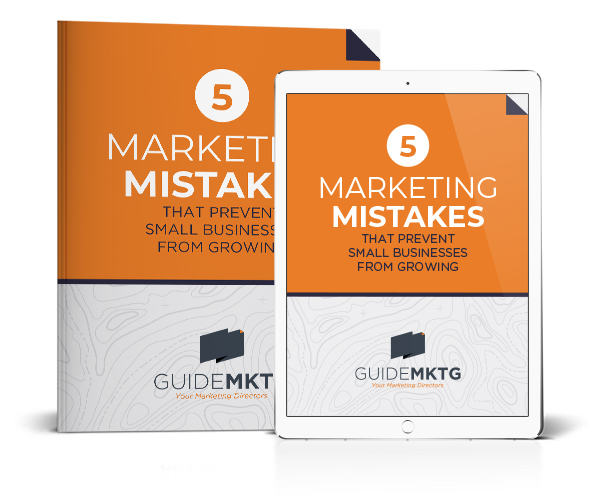What is a BrandScript?

At the core, the BrandScript is your story broken down. Think about it like a movie script.
Every player has a part in a movie script, right? Each character knows their place, whether they’re heroes or villains. There’s a problem that must be solved in order for the hero to be victorious.
Without a script, these characters would simply exist. They might be fun to look at, but they’d have no idea what they’re supposed to do and would likely wander around aimlessly. Scripts put everyone in their place and define the entire movie.
BrandScripts are like that, except they provide a roadmap to your website. You define everything you’d like to see on a website to figure out what needs to be done for an effective site design.

7 Key Elements of the StoryBrand Framework and How They Fit into the Brandscript
BrandScripts all start with understanding the StoryBrand framework. There are seven key elements to the framework, and each has a different role within BrandScript.

Element #1: The Hero
Let’s make this clear from the get-go – you are NOT the hero. The customers are the hero, and they want something. As you design your client’s website, you want the site to come across as a resource that can fill their need. The most prominent way to make that happen is with the header.
Remember, the header has to make enough of an impact to keep the audience interested, so it’s critical that what your client offers is clear and concise. If people don’t know what’s being offered immediately, then the header needs to be revised.

Element #2: The Problem
Anyone shopping for something is looking for a solution to a problem. As a website designer, you need to ask your client a few questions like…
- Do you know the root cause of the customers’ problems?
- How does their problem relate to your product or service?
- How do customers feel about having this problem?
- Why is it so wrong for customers to feel this burden?
As part of the BrandScript, you’re literally defining who or what the villain is to your client’s customers. By honing in on the problem and hyper-focusing on the details of what the situation does to your client’s customers, you’re better able to leverage your client as the guide.

Element #3: The Guide
In every story or movie, there’s always a guide. This character helps the hero find their way or has sage advice to offer to help the hero make the right choice.
That’s your client’s business. They’re supposed to be the guide that helps the hero choose the right decision, but there’s a strategy involved.
In the BrandScript, a guide is defined as…
- Being able to express empathy and understanding
- Presenting as a competent authority
- Ensuring your client’s website identifies and validates customer feelings
- Offering complete understanding of where the customers are coming from
At that point, the company is positioned as an authoritative guide. You’re now ready to showcase your client as the solution to customer problems, starting with the plan.

Element #4: The Plan
Presenting a plan to your client’s customers further establishes trust between the two. When you’re designing a website, you want to think about the steps customers would take that can result in
a sale.
Defining the plan within the BrandScript means identifying 3 or 4 steps that customers can take to act on the sale or explain how your client’s product or service is useful after the fact.
Another critical part of the plan is listing agreements their customers might like to see to help them feel safe about doing business with your client. Once they feel safe, they’re more likely to
take action.

Element #5: Calls to Action
There are two different types of calls to action – the direct and the transitional. The direct CTA is big, bold, and tells customers what to do without question. The transitional CTA is not quite as big or bold but still exact in telling customers what will happen when they click on it.
Under the BrandScript, it’s essential to work on your direct CTA and make it short, so you need to give this critical thought to develop the best option for your client’s business. The transitional CTA is more about on-ramping customers that may be a little gun-shy. They’re interested but aren’t yet ready to take the plunge.

Element #6: Negative Stakes
If this sounds ominous to you, that’s okay. It’s supposed to showcase the negative consequences for the customers if they don’t do business with your client.
For example, if your client runs an IT school, if all you add is finding jobs or getting paid well, it’s not enough to make them go for it. Instead, you start by describing how they’ll be stuck where they are and struggle to make ends meet with a low-end job.
It sounds harsh, but it’s the truth of the negative stakes or pain points that people feel, and it’s very much part of the BrandScript. Customers need to know your clients identify with their struggles, so calling out the issues puts your client in line with their feelings. Once you’ve made that part clear, it’s time to reveal the light at the end of the tunnel – the positive benefits of working with your client.

Element #7: Positive Stakes
Here’s where you tell your client’s customers about all of the wonderful things that await them by choosing your business. List the positive changes they’ll experience and include a few testimonials if you have them.
In the IT school example, this is the point where you would let the customers know that there are good-paying jobs out there that need trained and educated people. Now you’re guiding them to choose to work with your client because they feel like your client really understands who they are, where they’re coming from, and can help them reach their goals.
While working with the BrandScript, this is where you notice your character transformation. You think about how the customers felt before using the product or service and who they become afterward.

What To Do With Your BrandScript
Your BrandScript is the roadmap to every client’s website. Put it in your website design arsenal and use it to figure out what needs to be done for your clients to help them pull in the business they’re going after.
If you’re not quite sure about doing this all on your own, you can also hire Lantern Marketing to do the work for you. As a Certified Storybrand Guide, we can help you fill in the holes in your BrandScript to help you get to the next level of website design. Schedule a call to learn more about how we can help you!





